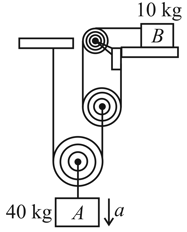BM Sharma Solutions for Chapter: Newton's Laws of Motion I, Exercise 5: DPP
BM Sharma Physics Solutions for Exercise - BM Sharma Solutions for Chapter: Newton's Laws of Motion I, Exercise 5: DPP
Attempt the free practice questions on Chapter 6: Newton's Laws of Motion I, Exercise 5: DPP with hints and solutions to strengthen your understanding. Chapterwise/Topicwise Daily Practice Problems (DPP) Mechanics I JEE Main & Advanced solutions are prepared by Experienced Embibe Experts.
Questions from BM Sharma Solutions for Chapter: Newton's Laws of Motion I, Exercise 5: DPP with Hints & Solutions
A rod can freely rotate in the vertical plane about the hinge at its bottom. Two strings tie the top of the rod with blocks and as shown in the figure. At the instant shown, the rod is vertical and the speed of the block is Find the speed of block
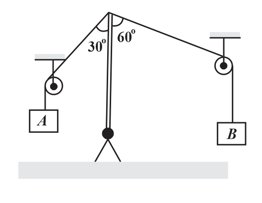
A lift is moving upwards with a constant speed of . The speed of one of the pulleys is as shown in figure. Then, the speed of second pulley is,
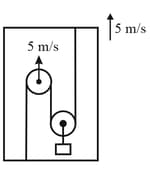
In the figure shown, neglecting friction and mass of pulleys, what is the acceleration of mass ?
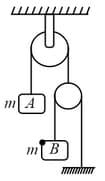
Two blocks of masses and are connected as shown in the figure. The acceleration of the block is
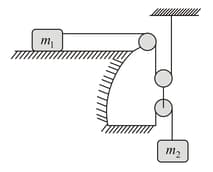
A system is shown in the figure. The velocity of sphere is . Find the speed of sphere .
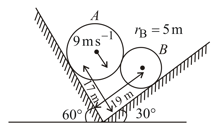
In the given arrangement, the mass of the block is and the surface on which the block is placed is smooth. Assuming all pulleys to be massless and frictionless, strings to be inelastic and light, and to be light supporting rods, then, the acceleration of point will be ( is fixed),
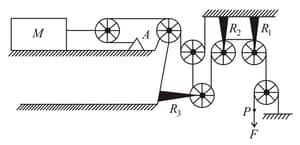
In the given arrangement, mass of the block is and the surface on which the block is placed is smooth. Assuming all pulleys to be massless and frictionless, strings to be inelastic and light, and to be light supporting rods, then, find the magnitude of the net force exerted by the pulley on the rod .
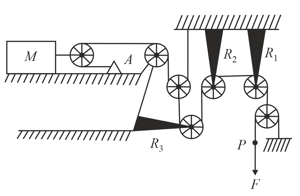
The figure shows two blocks and connected to an ideal pulley string system. In this system, when the bodies are released, then (neglect friction and take )
